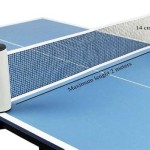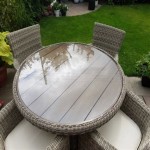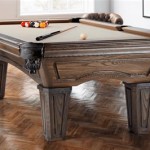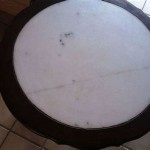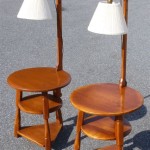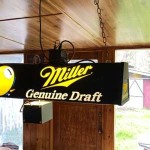Retractable Screens For Patio: Enhancing Outdoor Living Spaces
Retractable screens for patios represent a significant advancement in outdoor living, offering a versatile solution to enhance comfort and enjoyment while minimizing drawbacks associated with traditional screened-in structures. These screens, also known as motorized screens or roll-down screens, provide on-demand insect protection, sun control, and privacy, allowing homeowners to seamlessly transition between open-air ambiance and shielded enclosure. The technology behind retractable screens has evolved considerably, leading to increased durability, aesthetic appeal, and ease of operation.
The core concept of a retractable screen involves a screen mesh that is stored within a housing unit, typically mounted above or to the side of a patio opening. When deployed, the screen extends downwards or sideways, creating a barrier against insects, debris, and unwanted sunlight. When not needed, the screen retracts back into its housing, preserving the open view and maximizing airflow. This adaptability is a key advantage over fixed screens, which permanently alter the appearance and functionality of the patio.
The appeal of retractable screens extends beyond mere convenience. They contribute to the overall value of a property by expanding usable living space without requiring extensive construction. They allow homeowners to control their outdoor environment, mitigating issues such as mosquito infestations or harsh afternoon sun. Furthermore, they offer a degree of privacy, shielding occupants from the view of neighbors or passersby. The initial investment in retractable screens is often offset by the increased enjoyment and usability of the outdoor area, making it a worthwhile consideration for homeowners seeking to enhance their lifestyle.
Understanding the Mechanics and Materials
The functionality of retractable screens hinges on a combination of mechanical design and durable materials. The housing unit, typically constructed from aluminum or powder-coated steel, protects the screen mesh and houses the retraction mechanism. The screen mesh itself is a critical component, requiring a balance of visibility, durability, and insect resistance. Common materials include fiberglass, polyester, and even specialized solar screen fabrics designed to block UV rays.
The retraction mechanism can be either manual or motorized. Manual systems typically employ a spring-loaded roller, allowing the user to pull the screen down and secure it in place with latches or hooks. Motorized systems, on the other hand, utilize an electric motor to raise and lower the screen, often controlled by a remote, wall switch, or even smartphone integration. Motorized systems offer enhanced convenience and are particularly well-suited for larger openings or for individuals with mobility limitations.
Lateral guidance systems play a crucial role in maintaining the screen's integrity and preventing it from blowing in the wind. These systems typically consist of tracks or cables that run along the sides of the opening, guiding the screen smoothly and securely. The design of the lateral guidance system is critical for ensuring the screen remains taut and prevents gaps that insects could exploit. High-quality systems incorporate robust hardware and precise engineering to withstand wind pressure and maintain long-term performance.
The choice of materials significantly impacts the lifespan and performance of the retractable screen. Aluminum housings are preferred for their corrosion resistance and lightweight properties, while powder-coated finishes provide added protection and aesthetic appeal. Screen mesh materials vary in their weave density, UV resistance, and tear strength. Selecting the appropriate material based on the specific climate and intended use is essential for maximizing the screen's longevity.
Key Considerations When Choosing Retractable Screens
Selecting the right retractable screen for a patio requires careful consideration of several factors, including the size of the opening, the desired level of insect protection, the need for sun control, and the overall aesthetic of the outdoor space. The size of the opening dictates the dimensions of the screen and the power of the retraction mechanism. Larger openings may require heavier-duty motors and reinforced screen mesh to ensure proper operation and durability.
The level of insect protection is determined by the weave density of the screen mesh. Tightly woven meshes offer superior protection against smaller insects, such as no-see-ums, while more open weaves provide better visibility and airflow. Homeowners in areas with heavy insect populations should prioritize tighter weaves, while those in more temperate climates may opt for a compromise between insect protection and visibility.
Sun control is another important consideration. Specialized solar screen fabrics can block a significant portion of UV rays, reducing heat gain and protecting furniture from fading. These fabrics are available in a range of colors and opacities, allowing homeowners to customize the level of shade and privacy. Selecting a fabric with appropriate UV resistance is particularly important for patios that receive direct sunlight.
The aesthetic of the retractable screen should complement the existing architecture and landscaping. Available in a variety of colors and styles, retractable screens can be seamlessly integrated into the patio's design. The housing unit can be custom-matched to the exterior paint color, and the screen mesh can be chosen to complement the surrounding foliage. Paying attention to these details ensures that the retractable screen enhances the overall appearance of the outdoor space.
Budget is invariably a consideration. Prices can vary considerably based on the size of the screen, the type of retraction mechanism (manual vs. motorized), the quality of the materials, and the complexity of the installation. Obtaining quotes from multiple vendors and carefully comparing features and warranties is essential for making an informed decision.
Installation and Maintenance of Retractable Screens
Proper installation is crucial for ensuring the long-term performance and reliability of retractable screens. While some homeowners may attempt a DIY installation, it is generally recommended to hire a professional installer with experience in retractable screen systems. Professional installers have the expertise to properly measure the opening, securely mount the housing unit, and ensure the screen operates smoothly and reliably.
The installation process typically involves several steps. First, the installer will measure the opening to ensure the screen fits properly. Next, they will mount the housing unit to the wall or ceiling, ensuring it is level and securely fastened. The screen mesh is then carefully installed and adjusted to ensure it retracts and extends smoothly. Finally, the lateral guidance system is installed and calibrated to prevent the screen from blowing in the wind.
Maintenance of retractable screens is relatively straightforward. Regular cleaning is essential for removing dust, dirt, and debris that can accumulate on the screen mesh. A soft brush or vacuum cleaner can be used to remove loose particles, and a mild soap and water solution can be used to clean more stubborn stains. Avoid using harsh chemicals or abrasive cleaners, as these can damage the screen mesh.
The retraction mechanism should also be inspected periodically. Lubricate moving parts as needed to ensure smooth operation. Check for any signs of wear or damage to the screen mesh or the housing unit. If any issues are detected, it is best to consult with a professional repair technician.
During periods of inclement weather, such as high winds or heavy rain, it is advisable to retract the screen to prevent damage. Excessive wind pressure can tear the screen mesh or damage the retraction mechanism. Retracting the screen during severe weather events can significantly extend its lifespan.
Proper care and maintenance can significantly extend the lifespan of retractable screens. By following these simple guidelines, homeowners can ensure their retractable screens provide years of reliable performance and enjoyment.

Motorized Retractable Screens For Porch Patio Phantom

Retractable Screens Rollshield Hurricane Protection

Motorized Screens For Porch And Patio Screenmobile

Motorized Retractable Patio Screens Roll Up Houston The Shade

Motorized Retractable Patio Screens Roll Up Houston The Shade

Motorized Retractable Screens For Outdoor Porches Patios And Decks

Motorized Screens For Patios Custom Designs Phantom

Motorized Retractable Screens St Augustine Fl Spf

Motorized Retractable Screens For Outdoor Porches Patios And Decks

Motorized Screens For Porch And Patio Screenmobile
Related Posts


